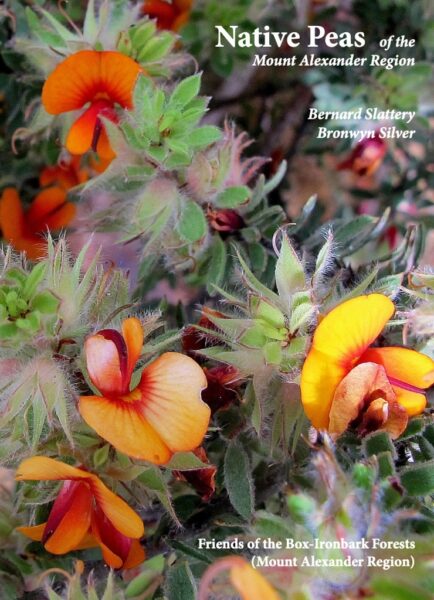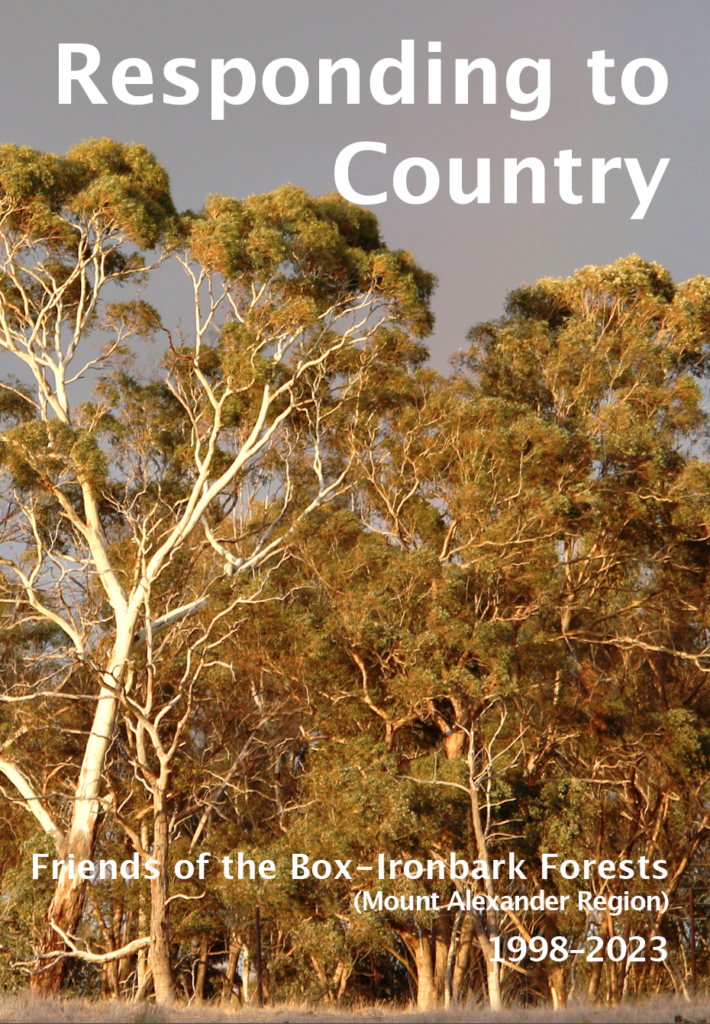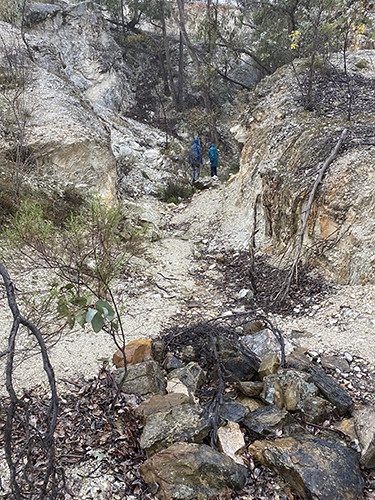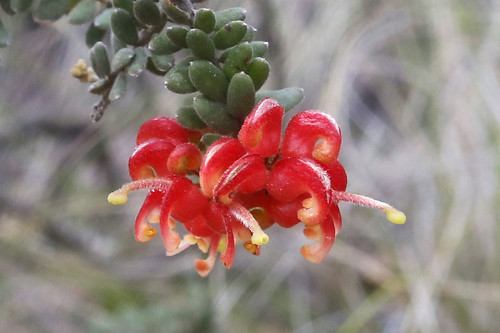The final FOBIF walk was a delightful stroll up and down the ridges through the beautiful forest of Fryers Ranges. We saw lots of wildflowers and thanks Frances for identifying and explaining key indicators and conditions of different plants. These included:
- A lot of the shrubs and grasses have been heavily browsed by animals. In an effort to deter browsers, some plants had made themselves very prickly (Hedge Wattle) or awful to taste (Bitter-peas) and even these were browsed!
- The Downy Grevilleas were looking a bit sparse, but still valiantly pushing out their red and yellow flowers to attract pollinators.
- Common Billy Buttons and Wax-lip orchids were flowering on short stems as a result of the extended dry weather.
- The native peas were putting on a good show: Purple Coral-pea, Bushy Parrot-pea, Large-leaf Bush-pea and Hill Flat-pea.
- Broad-leaf Peppermint trees bore spherical bundles of cream flowers and distinctive new, red foliage.
- White flowers were abundant in places: Fairy Wax-flower, Common Beard-heath, Early Nancies, Bushy Needlewood, and Common Heath (that we all agreed should be called Impressive Heath to match the botanical name Epacris impressa).
- Gold-dust Wattle and Hedge Wattle added their bright yellow ball flowers to the scene.
- Near Dearden Creek we saw Rock Ferns, Bracken and Maidenhair Ferns.
Basal leaves of orchids and swathes of the soft foliage of Blue Pincushions could tempt walkers back in a few weeks time to see different flowers.
Noel heard a lot more birds than we did.
Thank you Christine for leading us through your backyard and also paying homage to a magnificent Candlebark tree by leading us in song to the tune of Frère Jacques:
Mother tree
We love you
Long may you grow here
Strong and true
(all lines sung twice).
Bird list: Yellow-faced Honeyeater, White-throated Treecreeper, Rufous Whistler, Long-billed Corella, Sulphur-crested Cockatoo, Crimson Rosella, Grey Fantail, Grey Shrike-thrush, Striated Pardalote, Spotted Pardalote, Kookaburra, Little Raven, White-winged Chough, Grey Currawong, Shining Bronze-cuckoo.
Plant’s noted in flower: Grevillea alpina Downy Grevillea, Glossodia major Wax-lip Orchid, Tetratheca ciliata Pink Bells, Craspedia variabilis Billy Buttons, Caladenia fuscata Musky Caladenia, Platylobium montanum Hill Flat-pea, Philotheca verrucosa Fairy Wax-flower, Microseris walteri Yam Daisy, Thysanotus patersonii Twining Fringe-lily, Drosera auriculata Tall Sundew, Leucopogon virgatus Common Beard-heath, Wurmbea dioica Early Nancy, Veronica plebeia Trailing Speedwell, Lomandra longifolia Spiny-headed Mat-rush, Luzula meridionalis Field Rush, Pelargonium rodneyanum Magenta Stork’s-bill, Chiloglottis valida Common Bird-orchid (buds), Bulbine bulbosa Bulbine Lily (buds), Stackhousia monogyna Creamy Candles, Hakea decurrens Bushy Needlewood, Pultenaea daphnoides Large-leafed Bush-pea, Dillwynia sp. Parrot-pea, Epacris impressa Common Heath, Leucopogon fletcherii Twin-flower Beard-heath, Hibbertia fascicularis Bundled Guinea-flower, Caladenia carnea Pink Fingers and Eucalyptus dives Broad-leaf Peppermint.
Thanks to Liz Martin, Frances Cincotta and Noel Young for their contributions.

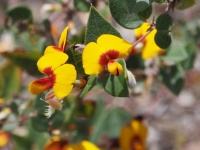
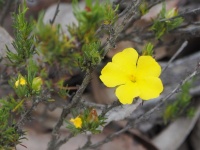
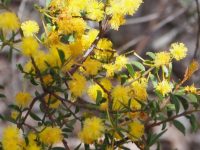
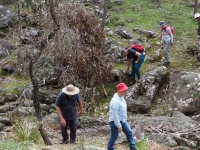
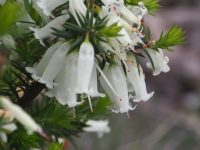
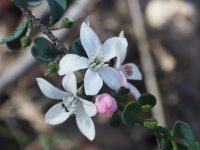
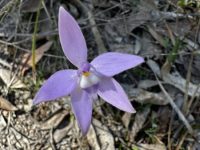
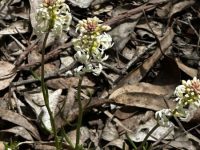
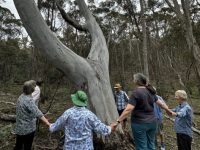
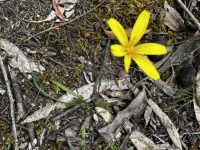
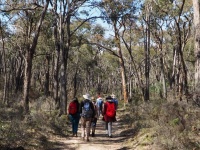

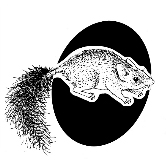
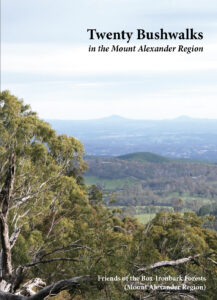
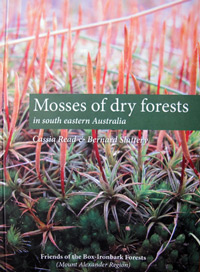 Click on image for info/order page
Click on image for info/order page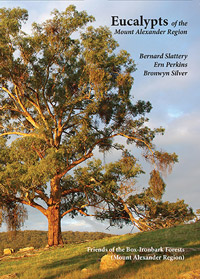 Click on image for info/order page
Click on image for info/order page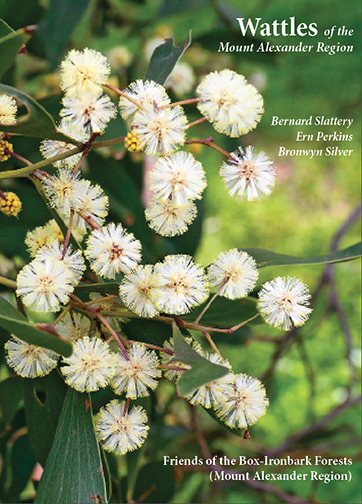 Click on image for info/order page
Click on image for info/order page